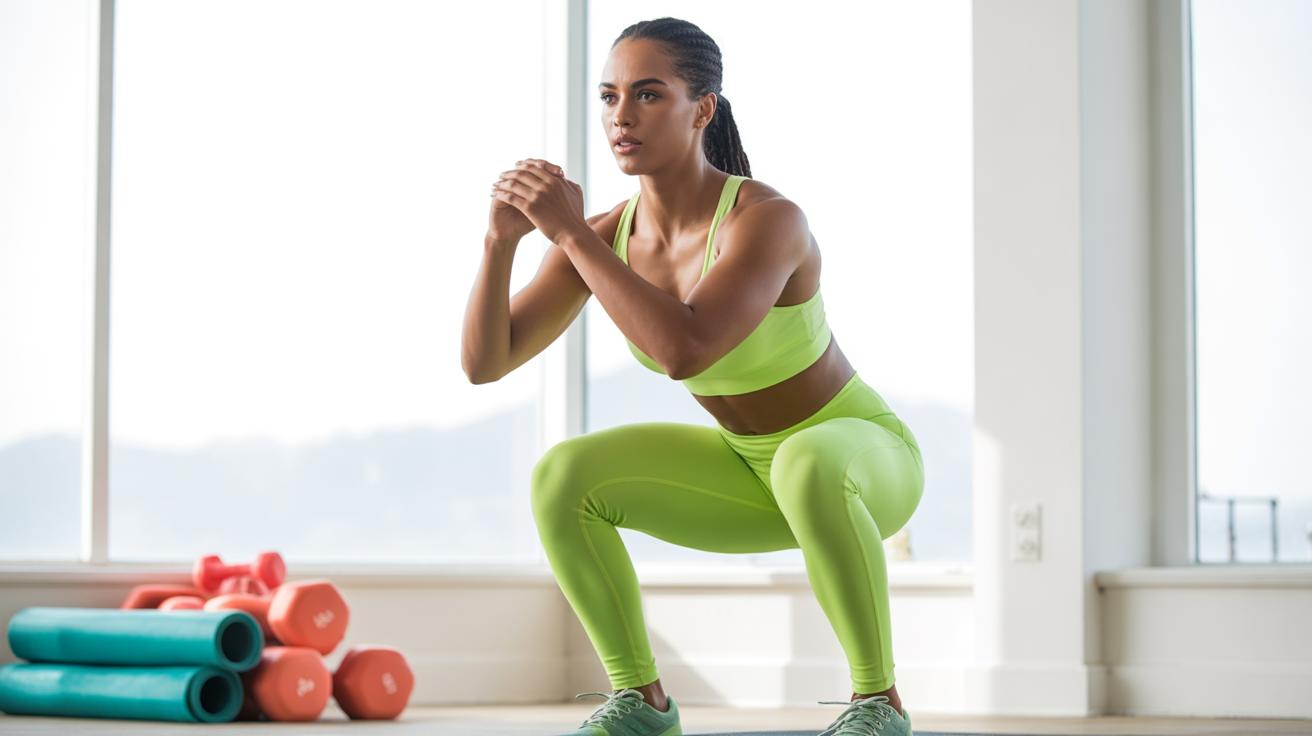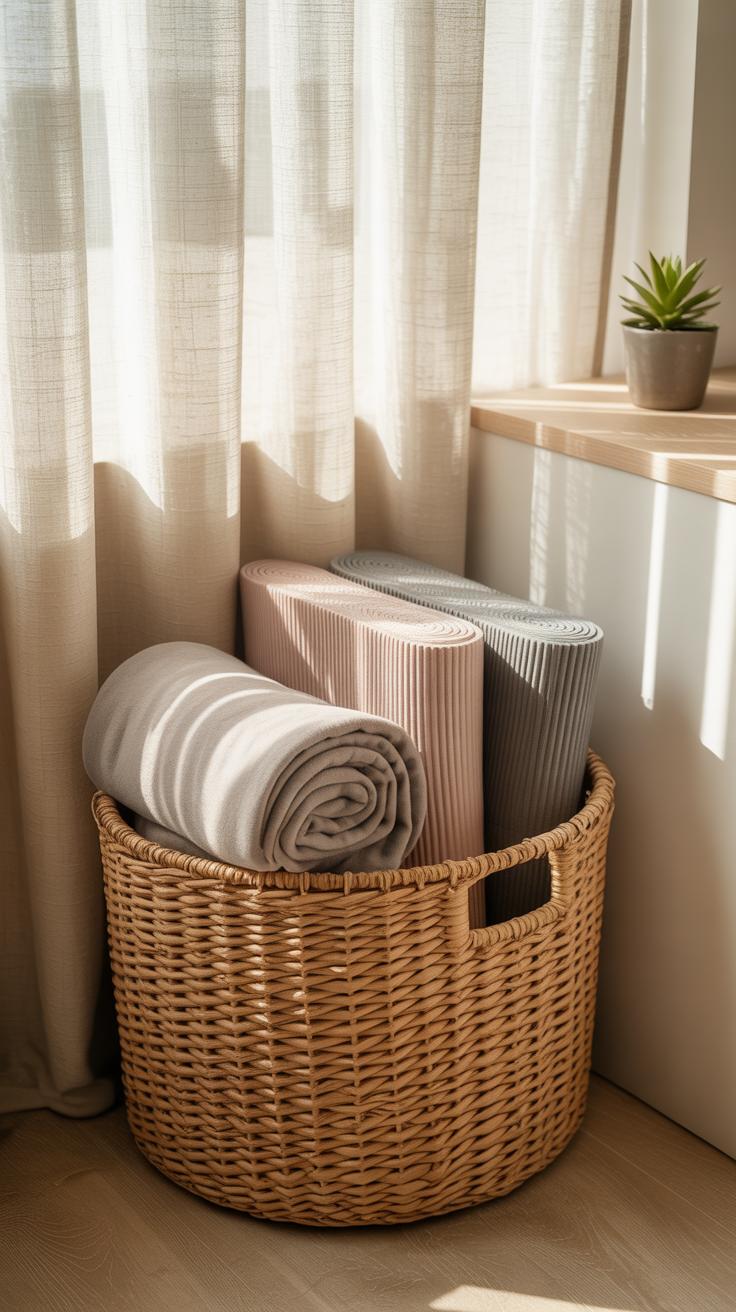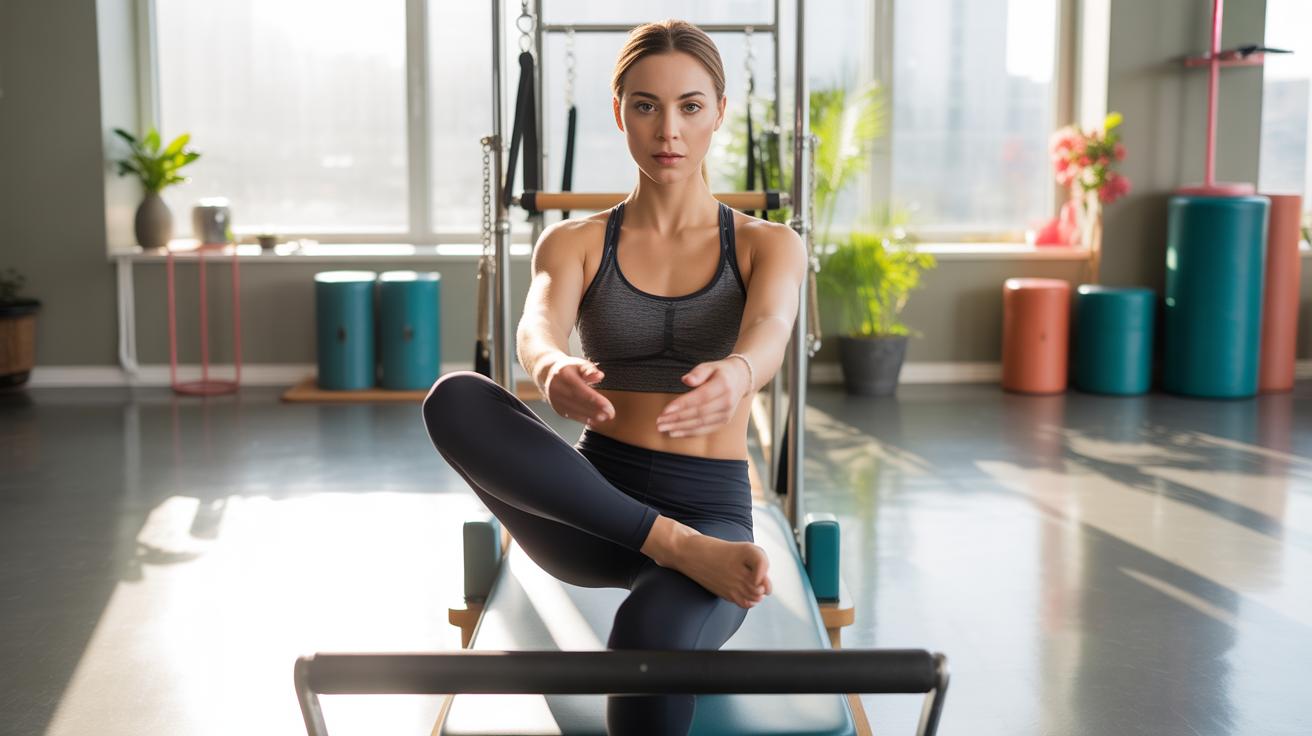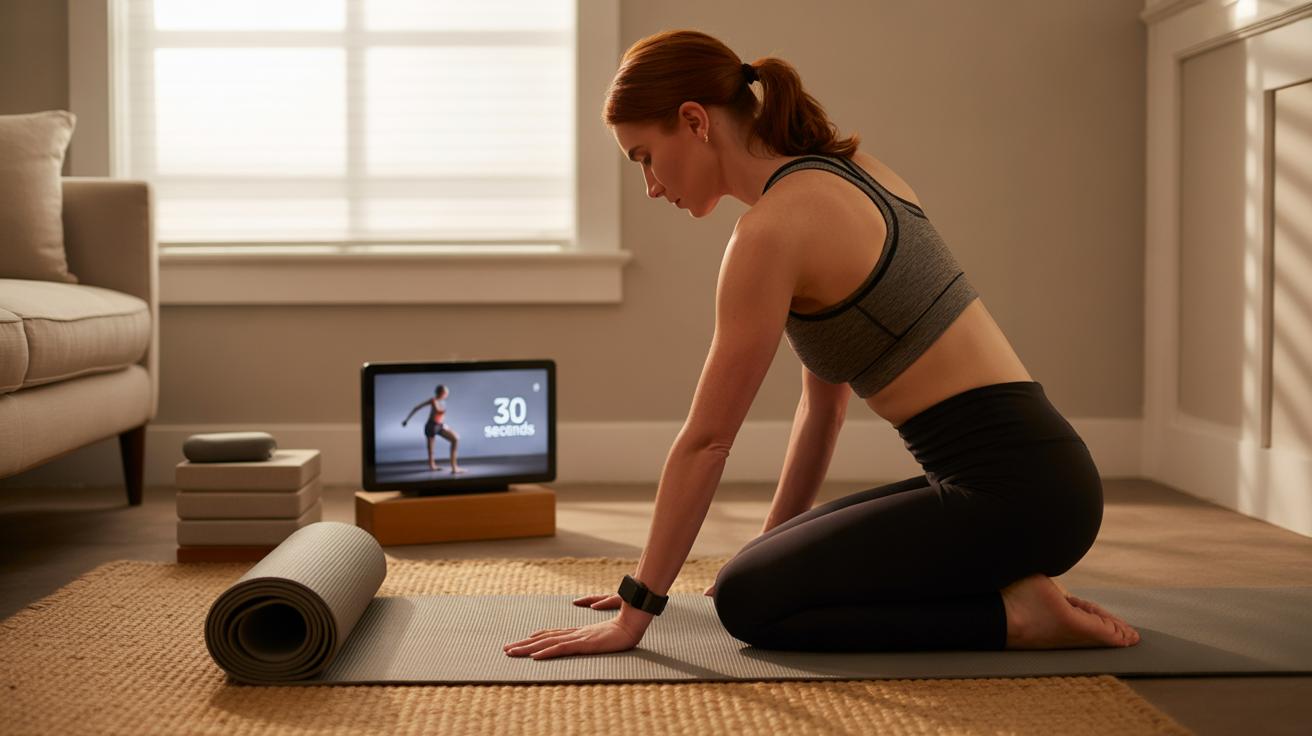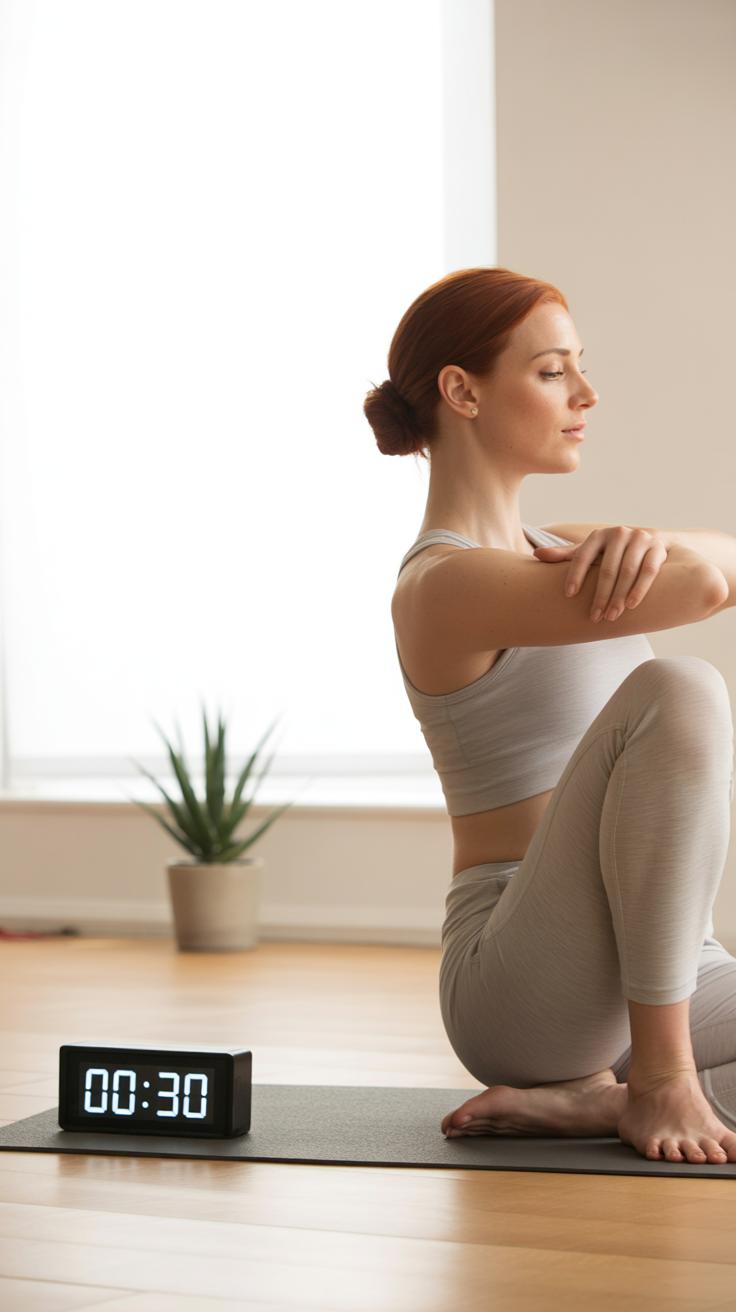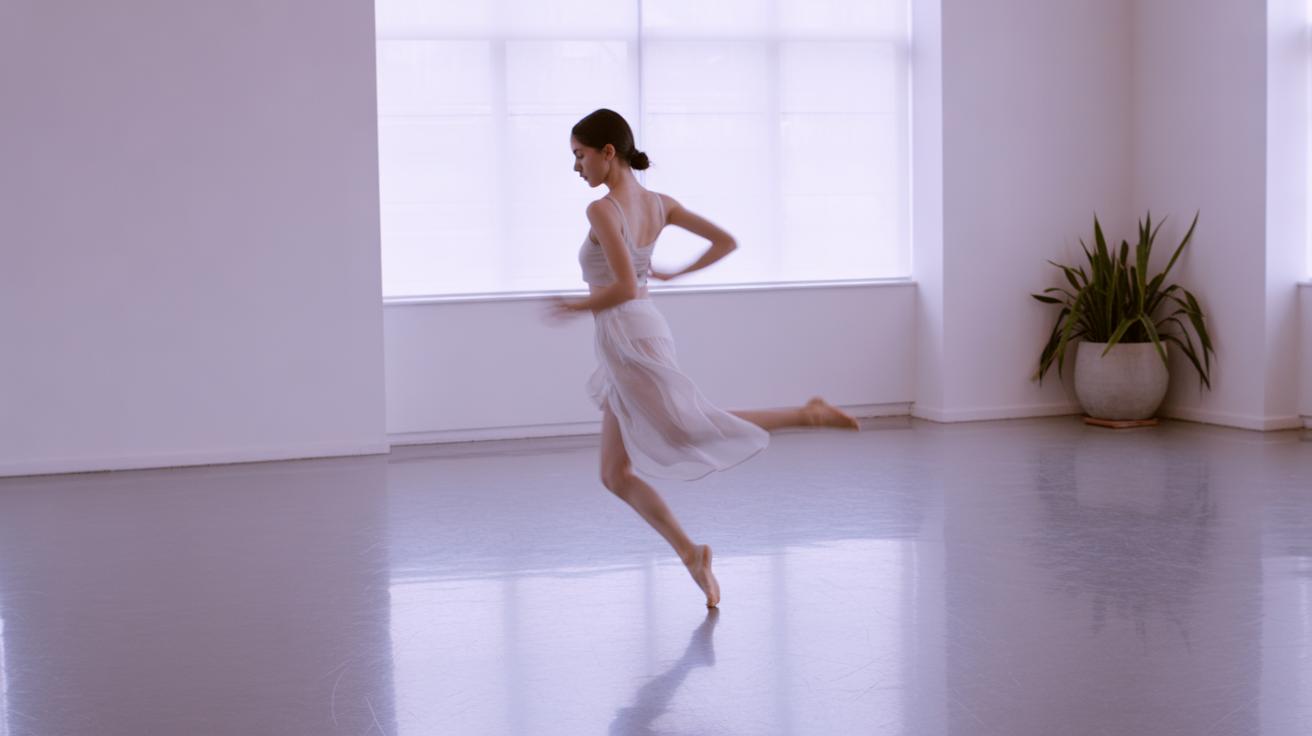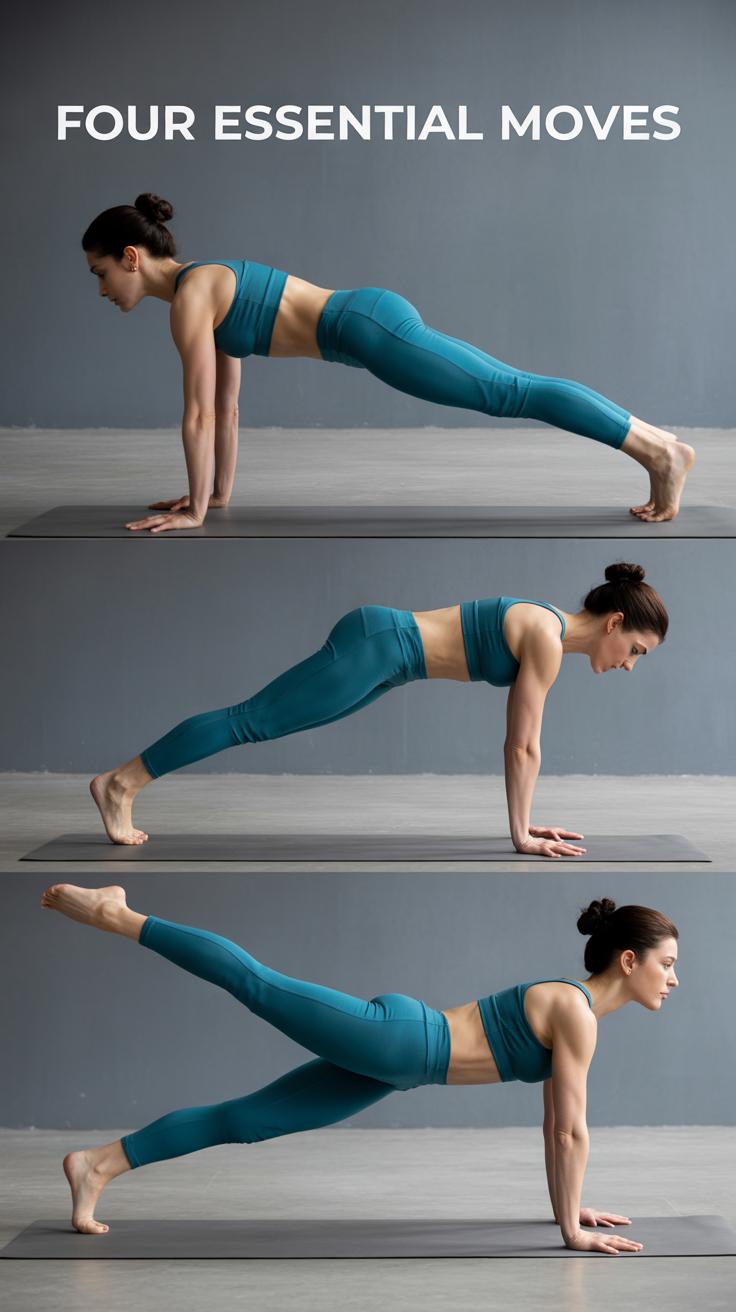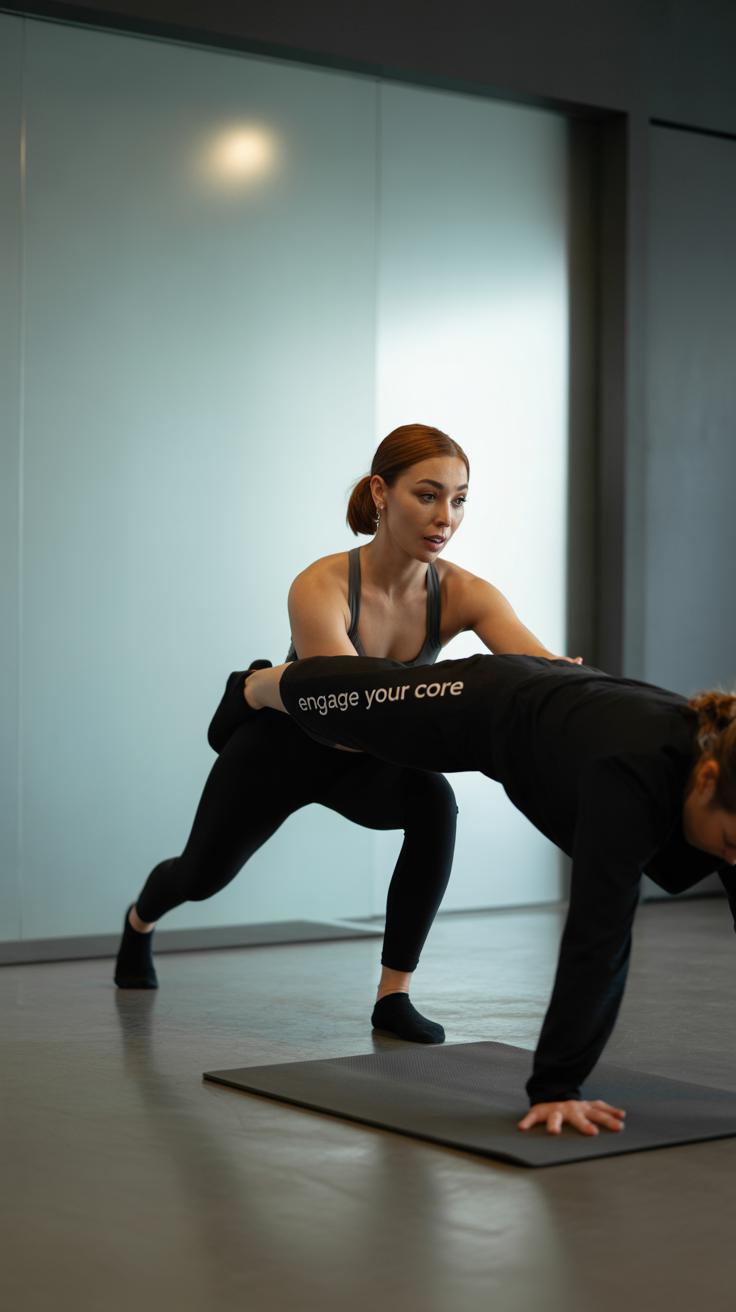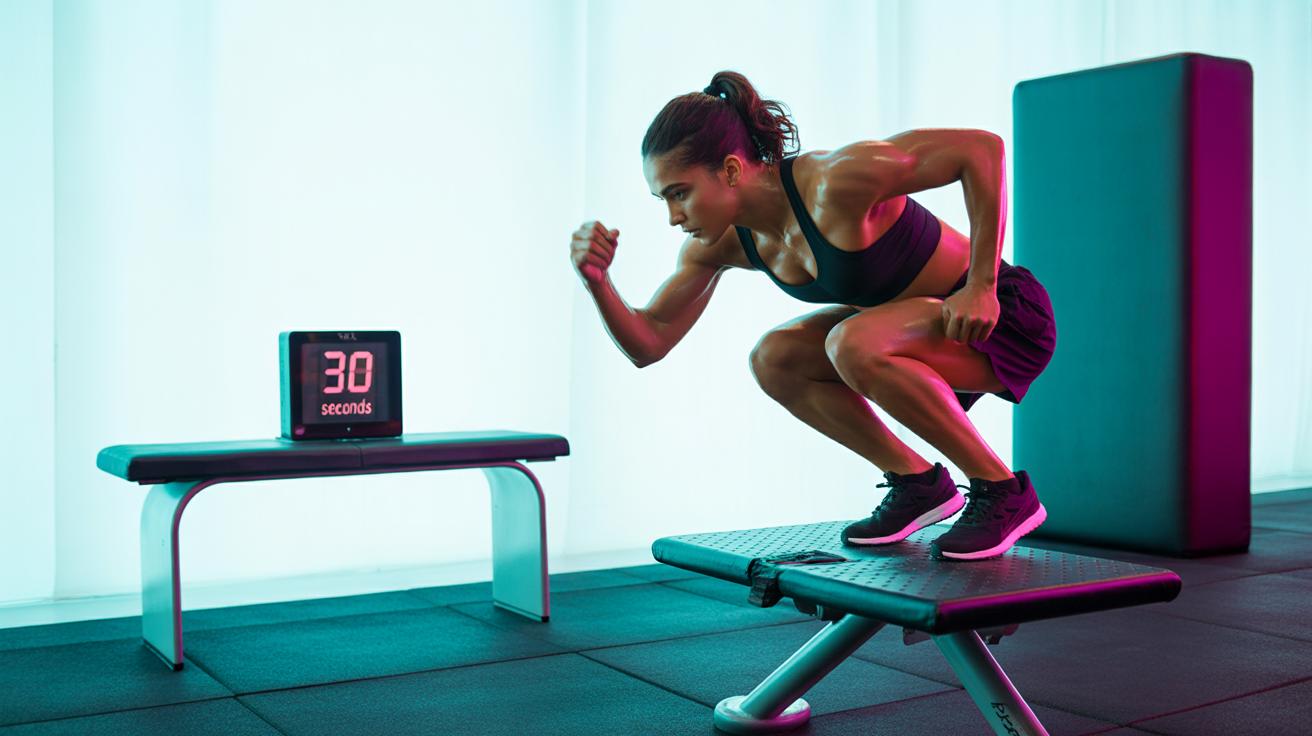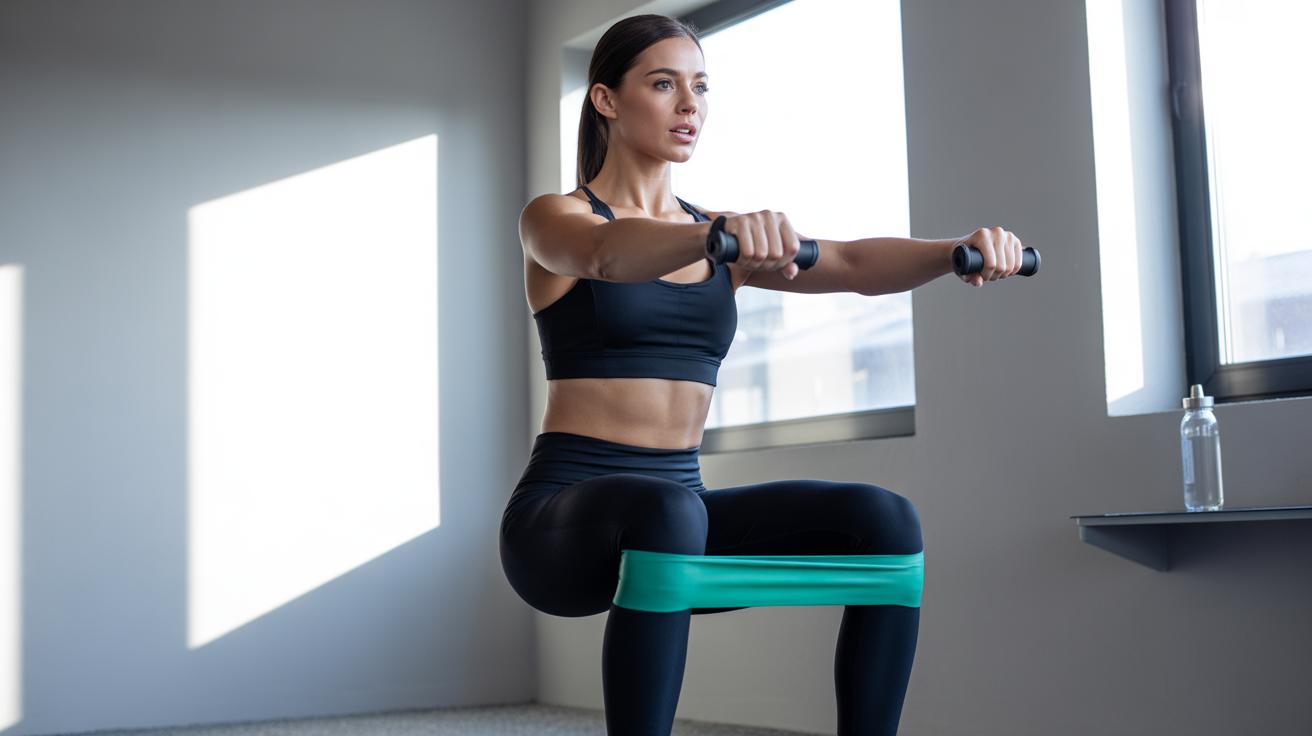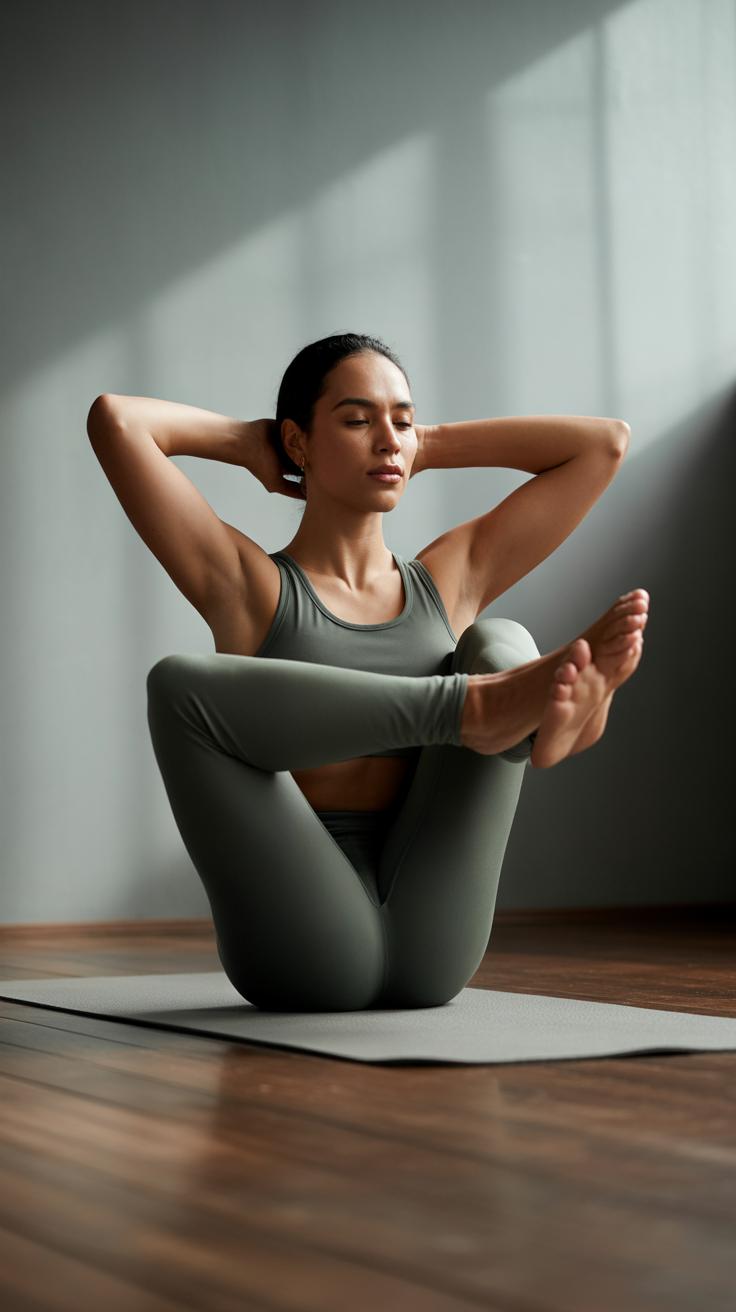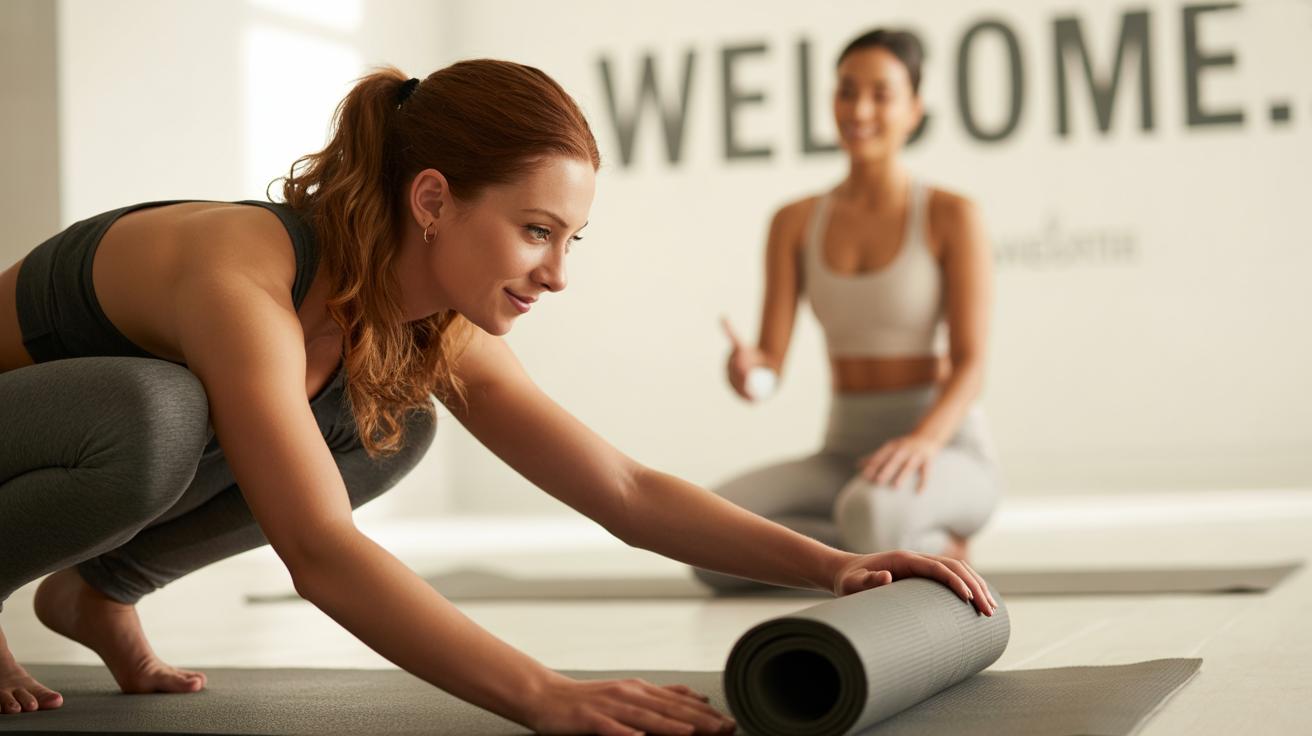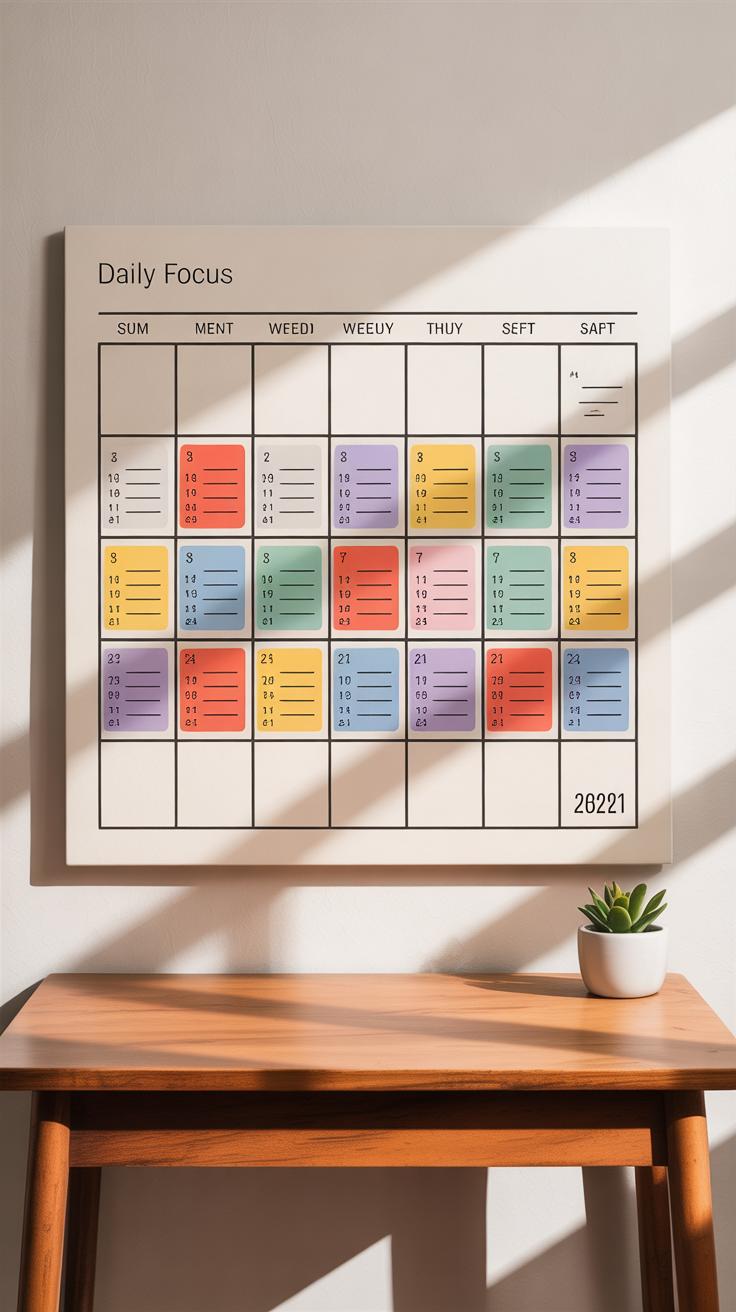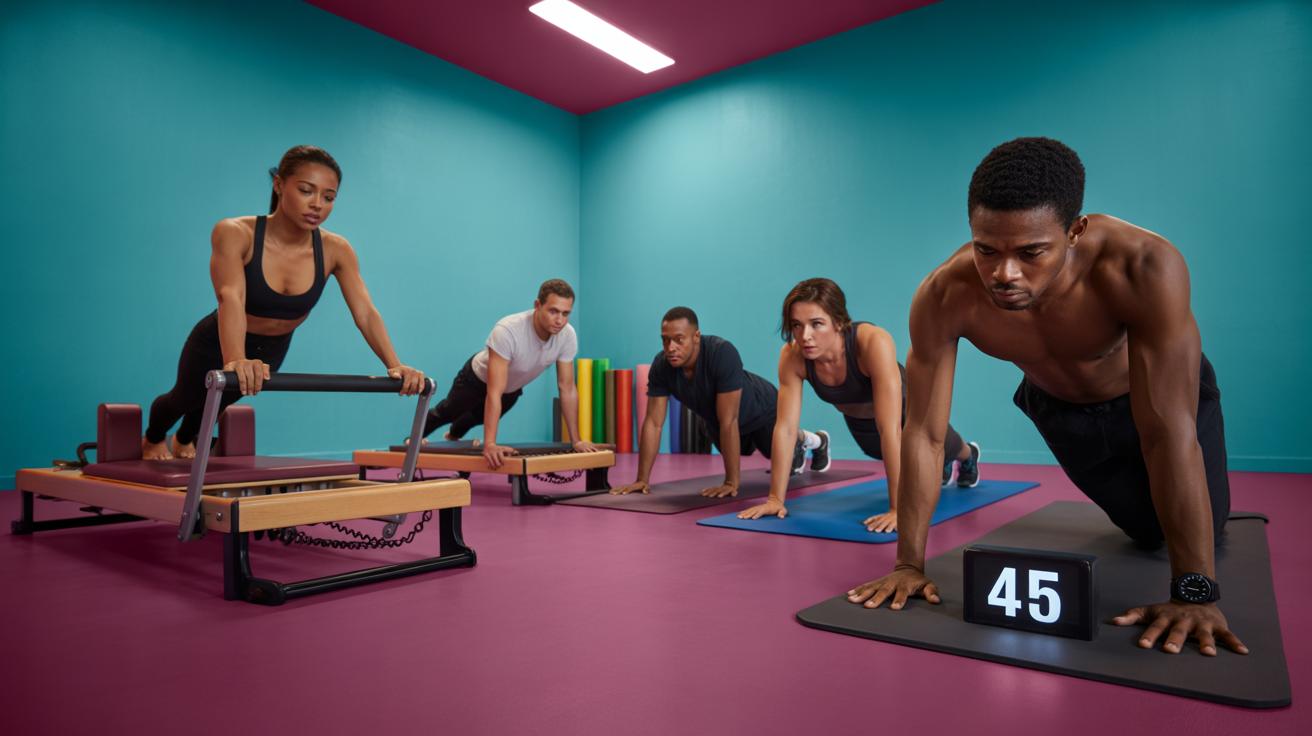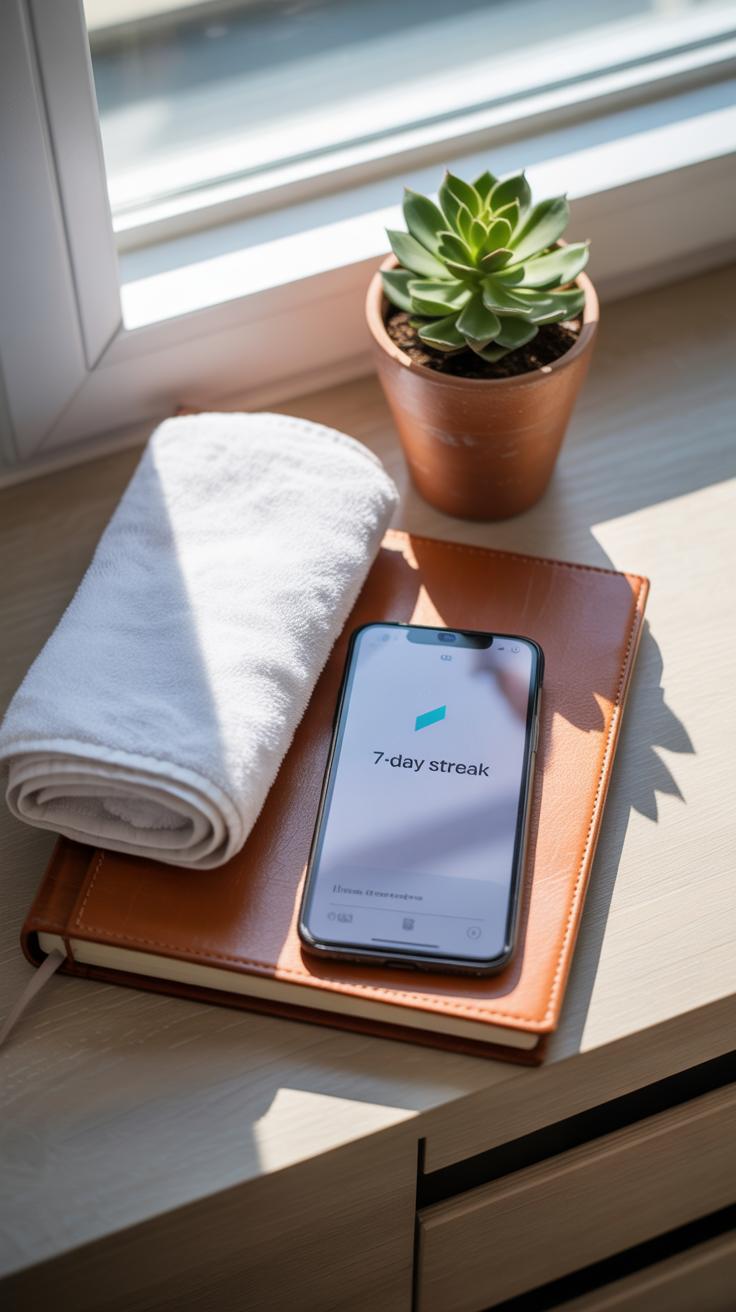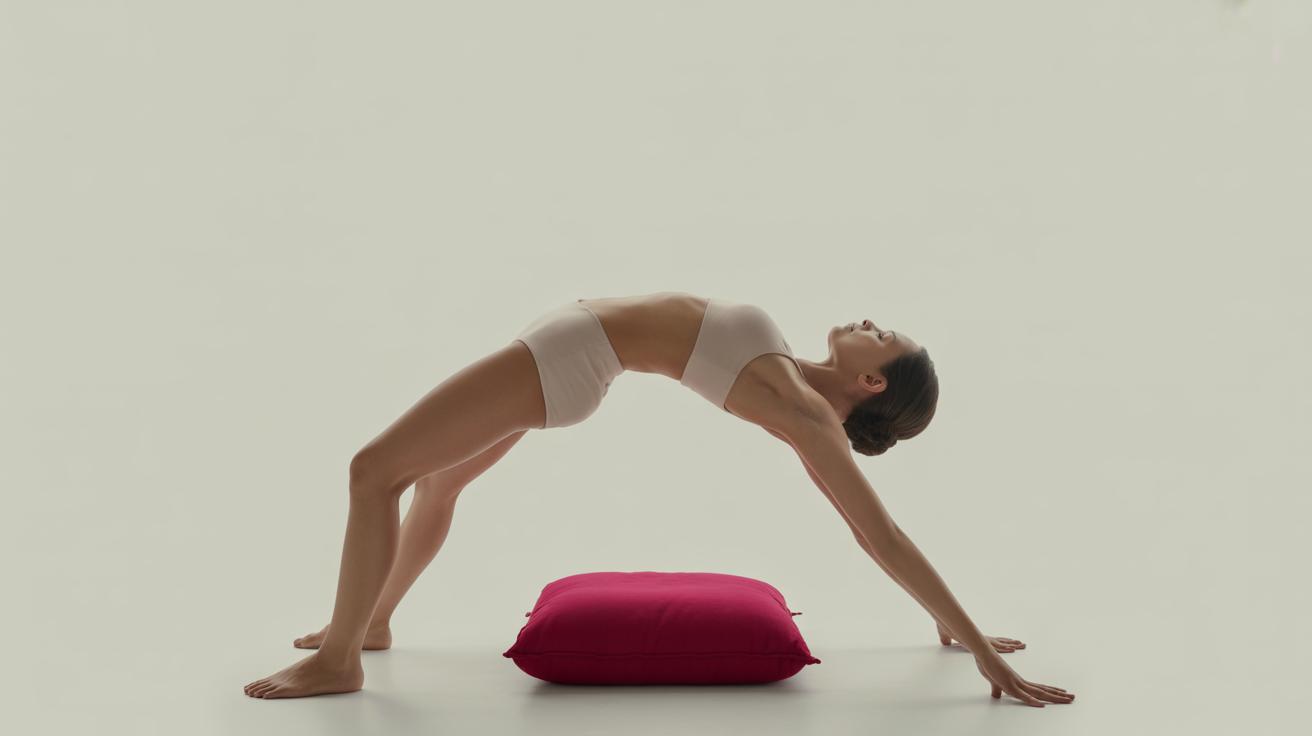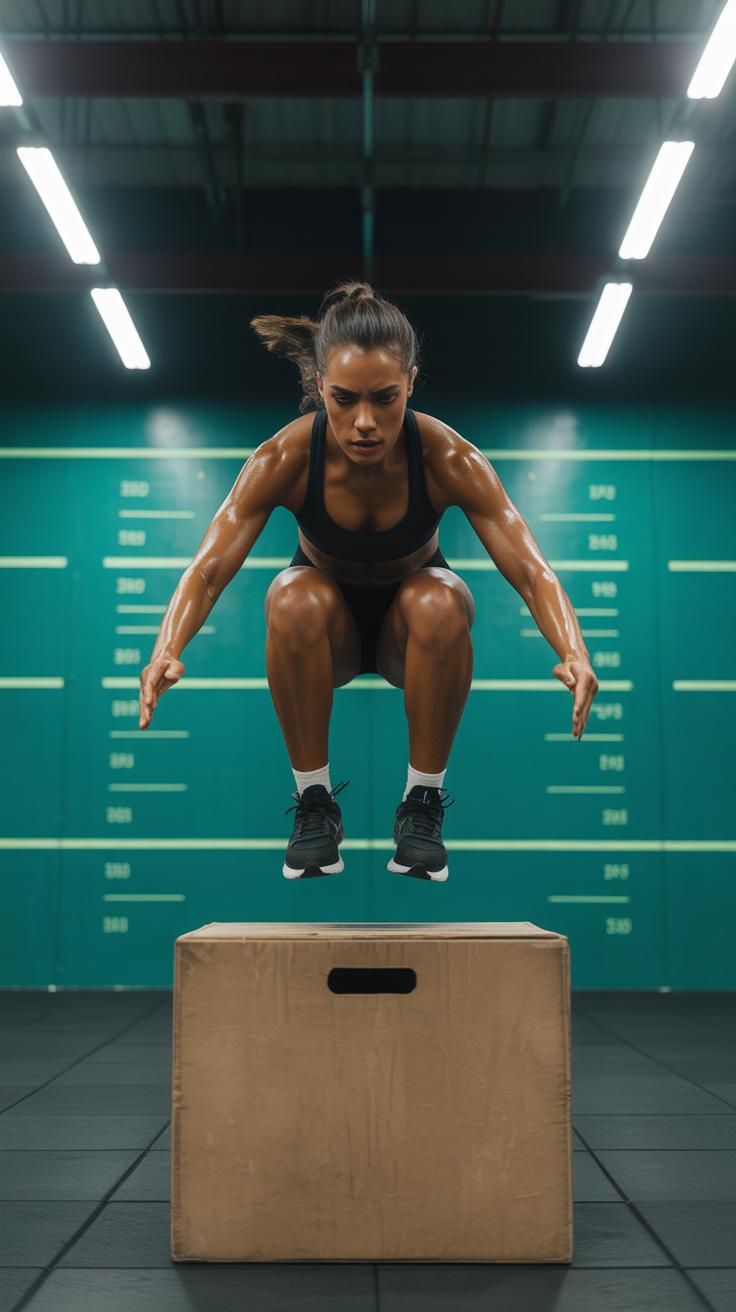Introduction
At Home Pilates Plan For Total Body Strength offers a practical way to improve your muscle tone, flexibility, and posture without leaving your house. Pilates is a type of exercise that focuses on controlling your movements while strengthening your core and body. You do exercises that emphasize breathing, alignment, and muscle control.
This article helps you understand how to set up a Pilates routine at home. You will learn easy exercises, why Pilates is beneficial, and how to keep yourself motivated. Whether you are new or experienced, this plan can help you reach your fitness goals.
Creating Your Space for At Home Pilates
Finding the right spot for your Pilates routine at home can feel unexpectedly tricky. You don’t need a big room or fancy equipment, but a little thought goes a long way.
Start with something simple like a yoga mat or even a thick towel. These give you enough cushion to protect bones during floor exercises without making you slip. I once tried working on a bare hardwood floor—it didn’t end well for my wrists.
Next, think about the environment. Quietness helps you concentrate on those controlled movements. Can you carve out a corner away from distractions? Maybe shift some furniture or close a door. Natural light is a bonus if you’re lucky, but don’t worry if your space is a bit dim—you’re after focus, not a spotlight.
Space is another thing. You won’t need miles of room. Just enough to stretch out arms and legs without knocking over a lamp or tripping on a chair. Try to keep the area clutter-free. It’s easier to move and it feels inviting, like you want to come back.
Finally, consider adding a small mirror, if possible. Watching yourself can catch misalignments you might not feel right away. It’s not necessary but can be helpful, especially when you’re starting out. You want your home Pilates time to be comfortable, sure—but also effective.
Choosing the Best Location in Your Home
Finding the right spot in your home matters more than you might think. Ideally, it should be a place with enough room to stretch out without bumping into furniture. Think about an open corner of your living room or maybe a bedroom floor. It doesn’t have to be huge, really—just enough for you to move freely.
Lighting plays a role too. Natural light can be refreshing and help keep your energy up. But if that’s not possible, a well-lit area works just as well. Try to pick a quiet space where distractions are minimized. You don’t want the TV blaring or people walking through while you’re focused on your movements.
Essential Equipment for Home Pilates
At home, you don’t need fancy or bulky equipment. A simple mat is usually enough to start. If you don’t have one, a thick towel folded a few times will do. Some people like adding resistance bands or small props like Pilates balls or foam rollers—these can enhance your workout if you want, but they’re not essential.
It’s okay if you’re unsure about buying gear right away. I remember hesitating over a band for weeks before trying one—it didn’t really change my routine but added a different challenge. Whatever you choose, focus more on the movements and less on the equipment. You can keep things simple. The key is just having a safe, comfortable spot where you feel ready to move.
Starting Your Pilates Warmup Routine
Warming up before your Pilates session does more than just “get you ready.” It actually prepares your muscles and joints for the movements ahead, reducing the risk of strain or discomfort. If you rush into Pilates cold, you might find yourself stiff or out of sync, which can be frustrating. A simple warm-up gently increases your blood flow and loosens up tight areas, making the exercises feel smoother. I’ve often noticed that skipping this step leaves me feeling a bit off-balance.
Gentle Movements to Prepare Your Body
Before you dive into Pilates, try some easy moves to wake up your body without tiring it out:
- Neck rolls: Slowly circle your head to release tension. It’s subtle but effective.
- Shoulder shrugs and rolls: Lift your shoulders toward your ears, then roll them back and down. Helps clear stiffness.
- Cat-Cow stretches: On all fours, arch your back then dip it down, stretching the spine gently.
- Pelvic tilts: Lie on your back and gently rock your hips back and forth to loosen your lower back.
- Deep diaphragmatic breaths: Place one hand on your stomach, breathe deeply into it, filling your belly with air.
These moves don’t exhaust you—they nudge your muscles awake. They also coax your mind into focus, which you’ll need for Pilates’s precision.
How to Breathe During Your Warm-up
Breathing might feel automatic, but during your warm-up, it deserves attention. Focus on slow, controlled inhalations and exhalations. Breathe deeply through your nose, letting your abdomen rise as you fill your lungs, then exhale fully through your mouth or nose.
This pattern relaxes your nervous system and tunes your mind to the present moment. Have you noticed how your breath tightens when you’re tense? Paying attention to this helps you shake off lingering stress, making your body more responsive for Pilates. It’s almost like telling your muscles, “Okay, we’re ready now.” You might find this simple breath work calms your thoughts better than you expected.
Basic Pilates Exercises for Total Body Strength
When you start Pilates at home, it helps to focus on a few foundational moves that really build your strength and stretch your muscles. These exercises don’t need fancy equipment—just a mat and some space, really. Trying them out consistently can create noticeable changes over time, even if it feels slow at first.
Core Strengthening Moves
The core is the center of your Pilates practice. Try the Hundred—it’s not just about waving your arms rapidly. Instead, lying on your back with legs lifted, you pump your arms while engaging your abdominal muscles, which is tougher than it sounds. You might find your breathing gets heavy faster than expected. The Pelvic Curl is another solid choice. Lying down, you peel your spine off the mat one vertebra at a time, which strengthens your lower back and hamstrings, but also demands control. It’s subtle but effective, so don’t rush through it.
Full Body Stretch and Strength
To work your entire body, exercises like the Swan or the Swimming pose combine stretch with strength. Swan engages your back muscles while opening up your chest and shoulders, pushing your flexibility just a bit. The Swimming pose challenges your coordination and tones the posterior chain through controlled arm and leg lifts. These moves blend strength and grace, which can feel a little tricky at first—you might catch yourself holding your breath or tensing up.
Balancing strength and stretch keeps your body responsive, not stiff. Over time, you’ll notice subtle gains in flexibility and tone that are sometimes easy to overlook day by day. Ever wondered if you’re working “enough” or just “right”? That’s part of the Pilates rhythm. Trust the process but listen closely to your body.
Maintaining Proper Form to Avoid Injury
In Pilates, posture and alignment aren’t just preferences—they’re essential. If you neglect proper form, your chances of injury rise, and the benefits drop. Think about your spine: keeping it neutral during exercises means neither arching nor flattening too much. But that can be tricky at home without a teacher guiding you.
One thing I remind myself is to keep my shoulders relaxed—not creeping up toward my ears, which is surprisingly common when concentrating. Also, engaging your core muscles correctly isn’t about tensing everything; it’s more like a gentle lift that’s steady but not forced. Beginners might find it confusing, but focus on slow, deliberate movements rather than rushing through reps.
Here are some tips to help you maintain form:
- Pause and check your alignment after each movement.
- Remember: slow is better than fast.
- Don’t forget to breathe steadily—it helps keep tension out of your neck and shoulders.
Checking Your Posture During Each Exercise
Keeping a neutral spine means your natural curves—neck slightly curved inward, upper back gently rounded, and lower back with its natural dip. A small adjustment can change the whole exercise, so try to tune in to how your body rests.
Shoulders should stay down and away from your ears, which might feel odd but prevents unwanted strain. Engage your core by imagining pulling your belly button slightly toward your spine without holding your breath. It’s a balance, not a contract.
If you feel off at any point, stop and reset. Sometimes, I catch myself leaning too far forward or collapsing through the chest because I’m eager to finish the set. That breaks form and can do more harm than good.
Using Mirrors or Videos to Self-Correct
Working out at home often means no instructor to cue you. Mirrors become your best friend here. Position one where you can see your whole body during exercises. It’s not about vanity—it’s about catching those small misalignments early before they become habits.
Recording yourself with a phone or camera also helps. Watching the footage—even if it feels awkward at first—provides insight you might miss in the moment. You may notice your hips tilting or your head jutting forward, which you can adjust next time.
Try these practical steps:
- Use a full-length mirror for a clear view of alignment.
- Record short clips focusing on tricky moves.
- Compare your form over time to track improvement.
It might feel slow and a bit frustrating initially, but this self-monitoring builds awareness that turns into better control and fewer injuries. Have you tried filming yourself before? It changes how you see your body—and your Pilates practice.
Incorporating Pilates Breathing Techniques
Breathing in Pilates isn’t just about oxygen; it’s like a rhythm that connects your mind and body. This breath helps you focus, making movements feel more deliberate and controlled. But it’s not always obvious how to breathe during Pilates. You breathe differently here than during casual breathing or other workouts. The key pattern is inhaling through your nose to expand your rib cage sideways and exhaling through your mouth while drawing your belly in gently.
Deep, steady breathing can calm your nervous system, which is why you might find Pilates sessions less stressful than other exercises. When you breathe this way, you not only improve oxygen flow but also keep your movements smoother, more precise. That feeling of calmness? It’s real, and it can push you to hold those poses longer or flow through transitions with less strain.
Try this simple pattern next time you do Pilates moves at home:
- Inhale slowly through your nose, letting your sides widen.
- Exhale fully through your mouth, engaging your core by bringing your navel slightly toward your spine.
- Coordinate your movement to the exhale; for example, lift your legs or curl your spine as you breathe out.
- On the inhale, prepare for the next move, expanding your chest but keeping your shoulders relaxed.
It might feel strange at first, almost like thinking too much about breathing. But once it becomes natural, your body feels connected, and exercises gain a clearer sense of flow. Does focusing on breath make you more aware of your muscles? Many find it does, even if only after a few sessions. Give it some time—you might be surprised how much your whole Pilates session improves.
Building a Weekly At Home Pilates Schedule
Finding a Pilates routine that fits your life—and sticks with you—can be a bit tricky at first. Start by thinking about your current fitness level and how much time you really have. If 30 minutes feels like too much, 15 is still a good start. Short sessions done regularly often bring better results than once-a-week marathons that leave you sore or burnt out.
You don’t need to practice every day to notice improvements. Aiming for three to four sessions weekly can help you build strength and flexibility steadily. The muscles you work during Pilates need recovery just like any other workout. So, sprinkling rest days throughout your week allows your body to adapt without feeling overwhelmed.
Some days, you might want to focus on core and balance; other days can be about stretching and lengthening muscles. Mixing up your routine keeps things interesting, even if you stick to mostly the same exercises.
Here’s a simple example of a weekly plan for beginners—each workout fits within 20 to 30 minutes:
- Monday: Basic core Pilates moves (hundreds, pelvic curls, single-leg stretches)
- Wednesday: Lower body focus (bridges, leg circles, side kicks)
- Friday: Full body flow combining upper and lower work, plus spinal articulations
- Sunday: Gentle stretching and breathing-focused Pilates
This avoids burnout, lets you practice enough to feel progress, and rests well between sessions. Would three or four days like this per week feel doable for you? If not, try spacing sessions farther apart, even if that means fewer days. The key is consistency over perfection.
Tracking Your Progress and Staying Motivated
Simple Ways to Monitor Your Pilates Gains
Keeping an eye on your progress in Pilates doesn’t have to be complicated. You might notice your muscles feeling less fatigued during workouts or movements that felt tricky before becoming easier. These small changes reveal growing strength.
Try simple tests every couple of weeks, like timing how long you can hold a plank or seeing if you can reach a bit further during stretches. Balance can be checked with one-legged stands—can you hold still longer without wobbling? You might be surprised how subtle improvements show up. Sometimes, you’ll feel stronger in your core even if the scale doesn’t change.
Finding Joy in Your Pilates Practice
Often, motivation dips because the routine feels stale. So, mix things up. Try new exercises or swap mats for a soft carpet. Set small goals like mastering a Pilates move in a week. Celebrate these wins; they make the process feel rewarding, not just like a chore.
Also, pay attention to how your body feels afterward—often, that calm, centered feeling is reason enough to keep going. When you enjoy the practice, sticking with it becomes less about discipline and more about something you want to do. If you’re ever bored or frustrated, maybe that’s a sign to switch things up or take a short break before coming back refreshed.
Adjusting Your Pilates Plan as You Improve
As you move forward with your Pilates practice, you might notice some exercises becoming easier. That’s a good sign, but it means you should probably shake things up before your progress stalls. Increasing the challenge gradually helps keep your muscles engaged and stops your workouts from feeling repetitive or boring.
You can start by adding more repetitions per set, but don’t rush into doubling everything overnight. A few more reps or slowly increasing hold times can do the trick without causing strain. Trying variations of familiar moves can also push your body in new ways—like switching a classic hundred into a single-leg version or adding pulses to your leg circles.
When you begin experimenting with new moves, pay attention to how your body reacts. If something feels off or you’re losing control of your form, it’s a sign to take a step back or proceed more cautiously. Pilates is about precision, after all.
If you find it tricky to tweak your routine on your own or hit a plateau you can’t seem to break, it might be time to consult a Pilates instructor. Sometimes, a fresh set of eyes can point out small adjustments that make a big difference or introduce exercises tailored just for your needs. Have you ever felt like you’re stuck even though you’re showing up regularly? That’s often where professional guidance shines.
Conclusions
By following an At Home Pilates Plan For Total Body Strength, you can improve your balance, build muscle, and feel more comfortable in your body. Pilates is gentle yet effective for strengthening your whole body. It requires no special equipment, making it easy to get started from home.
Stick with your Pilates routine and notice the changes in your body and mind. This approach fits into your daily life and helps keep your muscles strong and flexible. If you keep practicing, your body will become healthier and stronger each day.

